Research
An incomplete summary of research topics I'm engaged in:Star Formation
All star formation occurs in
molecular clouds. Molecular clouds are turbulent and magnetized.
The evolution magnetized turbulence is too complex to solve by hand,
so we resort to simulations.
To do this, I added a divergence free (CT) MHD scheme to the
adaptive mesh refinement (AMR) code Enzo. Enzo is free and open
source, you can get it at enzo-project.org
Current and future work centers around running simulations and
making fake observations. Observations of molecular clouds are
quite complex, and magnetic fields are nearly impossible to
measure, so we require simulations to properly understand the
measurements.
Recently we ran a bunch of star formation simulations
backwards to see what the initial conditions looked like. You can
see hundreds of baby stars being born in our Stellar Nursery
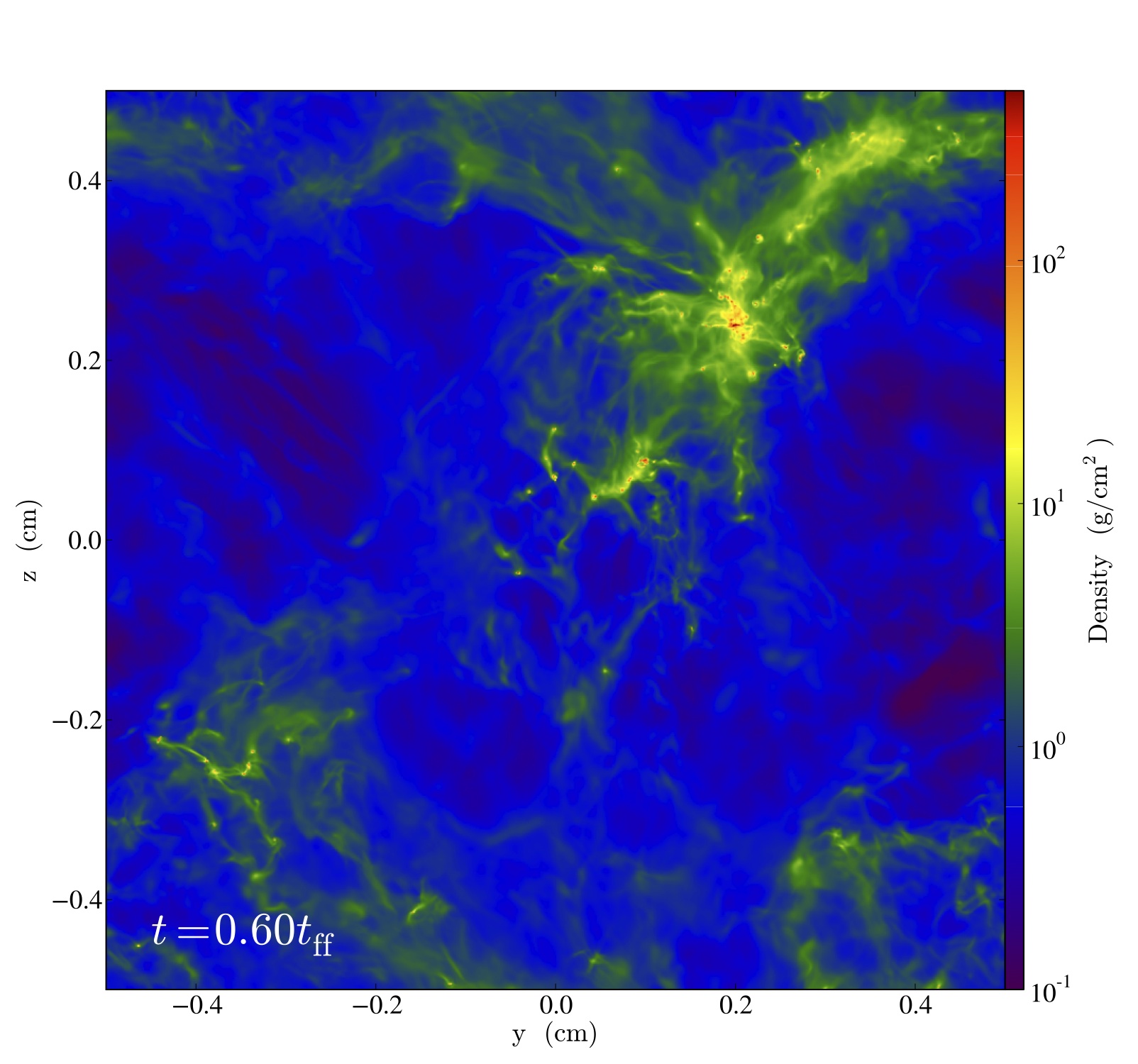
Supernovae
Type Ia supernovae are essential for our understanding of distances in the universe. But everyone leaves out the magnetic fields! So we did that. At the right you can see a great movie of magnetic fields suppressing nuclear burning. We also showed that late-time spectra of Type Ia Supernovae show that magnetic fields as large as 1,000,000 G (that's a million times stronger than a fridge magnet) are necessary to reproduce the light.
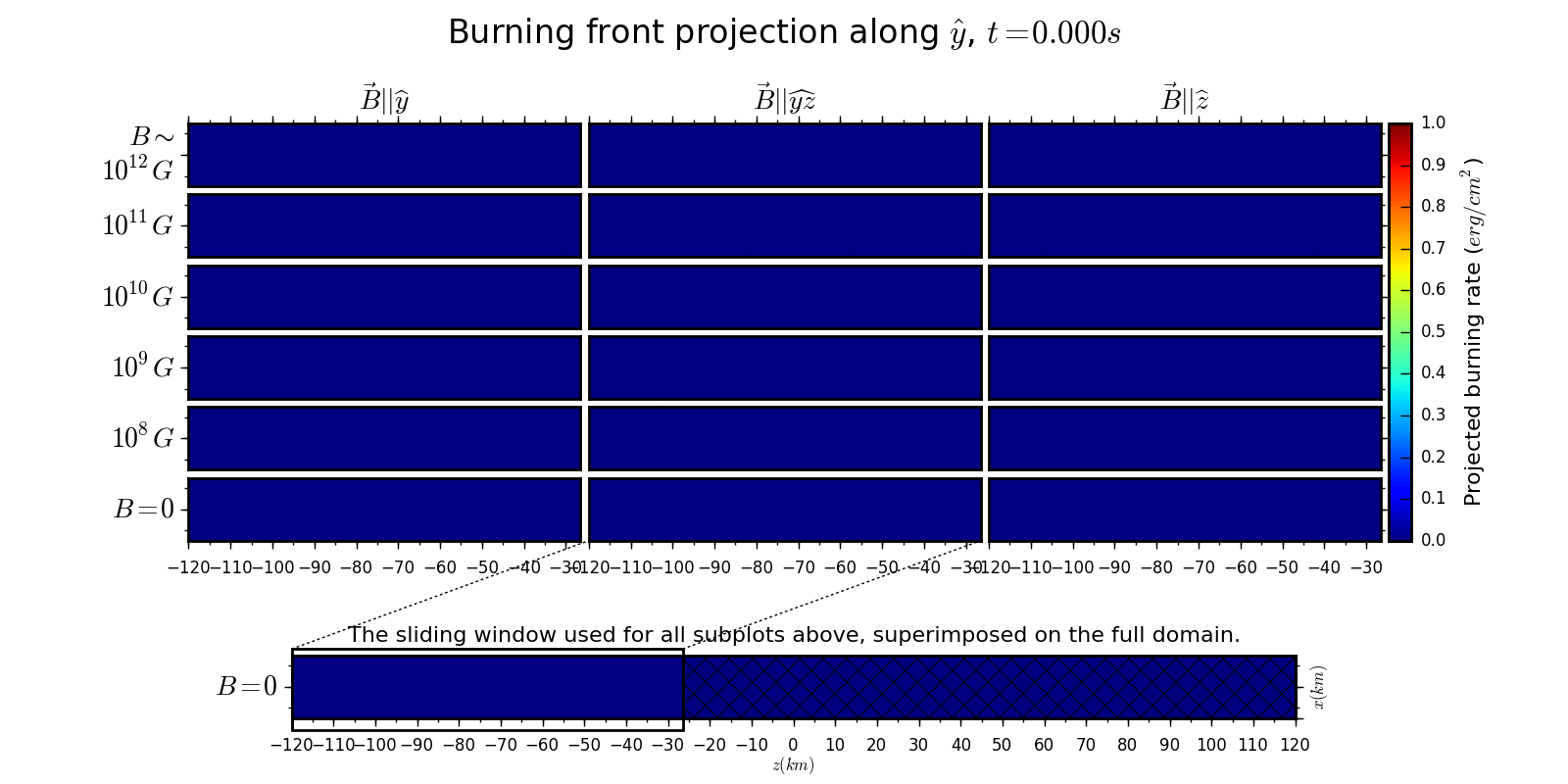
Turbulence
Turbulence is the chaotic result of stirring up a fluid. It creates small-scale
structure from large-scale motions. We study how turbulence behaves and how
magnetic fields affect the turbulence.
One cool result we have found is the Joint Distribution of Thermal
and Kinetic Energy in Isothermal Turbulence. Isothermal turbulence is
useful to study as it mimics the efficient cooling and compressibility
of outer space. The joint distribution of kinetic and thermal energy
shows that it takes high flow to make the thermal energy large. That
is, the gas needs to be fast if it's going to get dense.
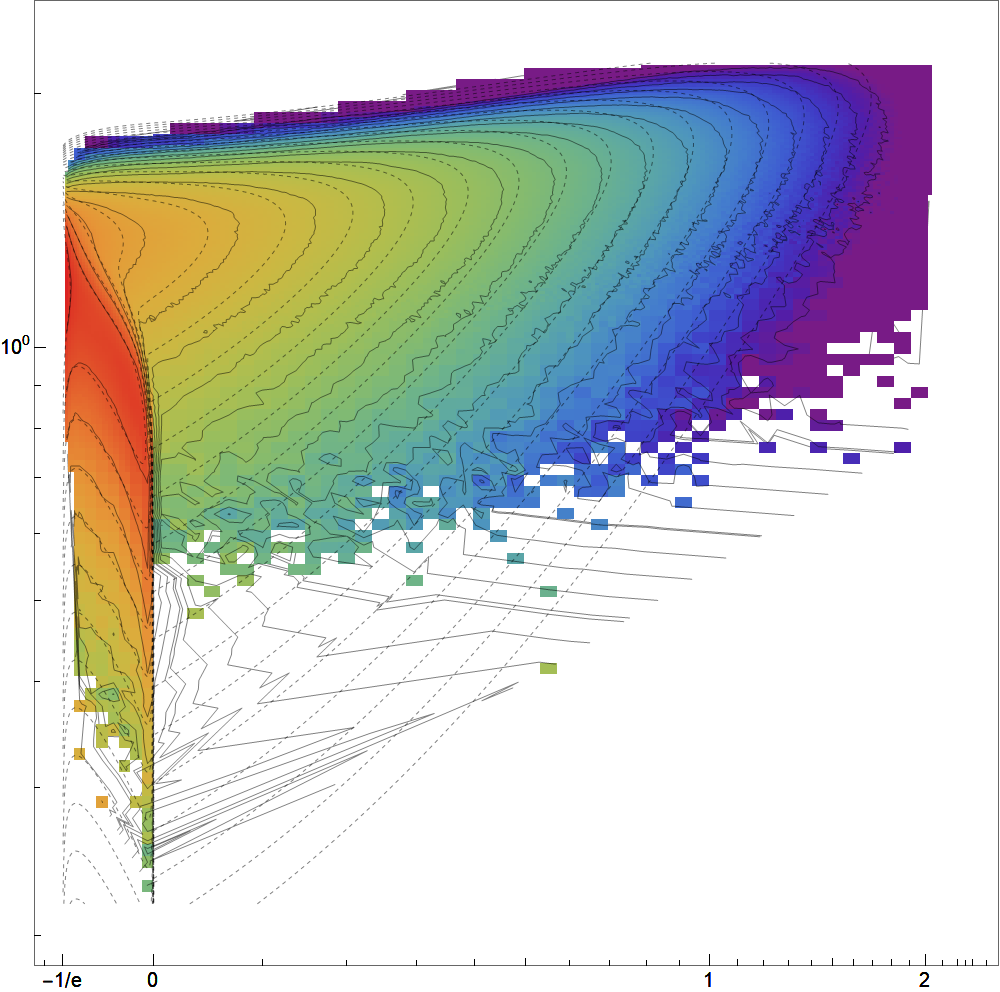
Galaxies and Clusters
The largest objects in the universe are galaxy clusters, and they're magnetized. We study how the magnetic fields evolve during the formation of galaxy clusters. At the right one can see a mock observation of radio relics at the outskirts of a galaxy cluster. Magnetic fields are important for making the gas in a cluster behave like a fluid.
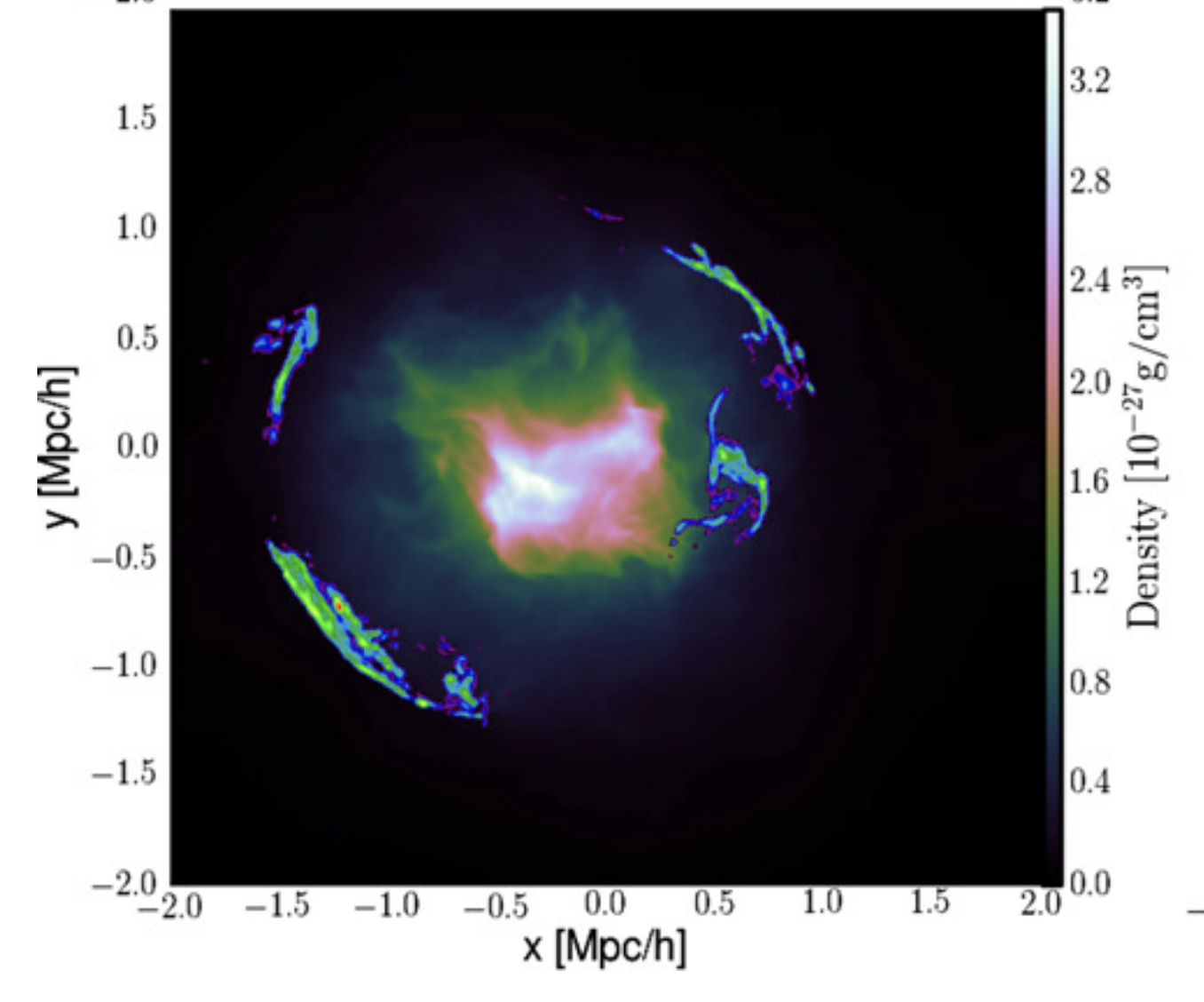
CMB Foregrounds
The cosmic microwave background (CMB) is an image of the violence
of the big bang that we can take with microwave telescopes.
In order to improve our understanding of the big bang, we must
understand what the magnetized turbulence of the gas inside our own
galaxy.
More soon!
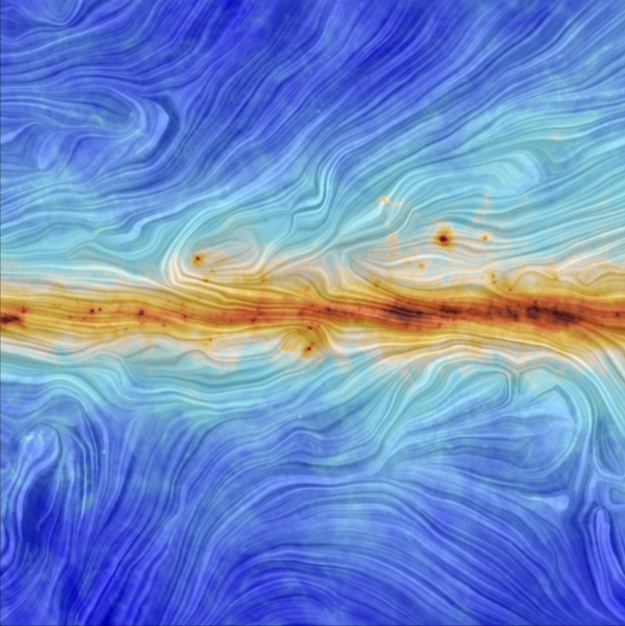
Code
I help develop and maintain the code Enzo (enzo-project.org). I developed the divergence-free magnetic field module for Enzo in 2010.